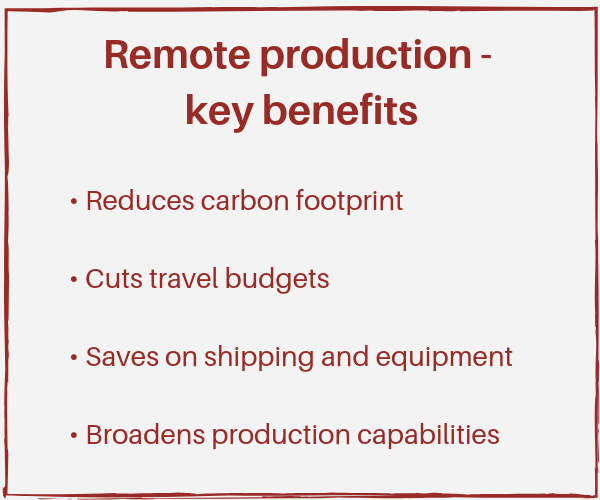
The rise of remote production
The production of big live broadcast events has come a long way since the days when production could only be done on location.
We’ve grown used to commentary being added remotely for a number of years but, today, a new revolution is taking place in the way live events are produced: remote production is becoming increasingly prevalent.
For a long time now, production companies and broadcasters have been able to add commentary from an audio booth thousands of miles from the action to the transmitted output.
And today, that capability has expanded through remote production: simultaneous commentary, in multiple languages across various events in numerous locations.
All without the need for a single OB truck.
What is remote production?
IBC.org described it as “the geographic separation of complex interconnected production processes”.
In other words, putting broadcast productions together across multiple locations.
What are the benefits of remote production?

And the biggest challenge?
In a word: latency.
Remote production enables broadcasters to source commentary from event locations as well as audio booths with an internet connection anywhere in the world.
International video production company NEP Group, for example – which acquired SIS Live in 2018 – can supply a remote-commentary box to source commentary. A plug-and-play system, it requires only power and a connection to work.
NEP Australia and Telstra Broadcast Services delivered the world’s first remote production across the Pacific in spring 2018.
Discovery: building remote-production hubs
NEP isn’t the only big player in the industry that’s investing and making huge inroads.
At the PyeongChang 2018, Discovery delivered its first Olympic Games coverage across 48 countries in Europe on free-to-air, pay-tv and online.
It was the first Games to be broadcast by Eurosport, which is 51%-owned by Discovery, as part of the €1.3 billion deal for the European rights to the Olympics to 2024.
Now, Discovery is spending “hundreds of millions of dollars” on a central content hub and technical infrastructure to transform its operations – and will “lose money on some of it in the early days”.
Dave Schafer, Discovery’s senior vice president of sports operations and planning, says that screening the Tokyo 2020 Games, which will require an operation three times the size of PyeongChang’s, “will be more of a remote production”, adding:
Before the action in Tokyo, however, Eurosport’s continued move towards remote production has been deployed at the French Open tennis tournament at Roland-Garros, where two studios gave the broadcaster’s production teams multiple options.
“As we move to more remote mixing, we have a control room and two studios on site at Roland Garros but also control rooms at Eurosport in Paris and in the UK,” says Gordon Castle, Eurosport, SVP, technology and operations.
Who might suffer as remote production grows?
In a post in November 2017, the IBC blog asked:
“Is it time to sell the OB truck?”
The post concludes:
As our industry continues to develop and grow at an ever-faster pace, remote production is already shaping the future.
In future posts, we’ll look more closely at further capabilities enabled by IP and 5g connectivity, such as localising content for specific markets.

Umbrella Company Reforms - An Overview

Product + audience + platform: why the Premier League is going its own way
